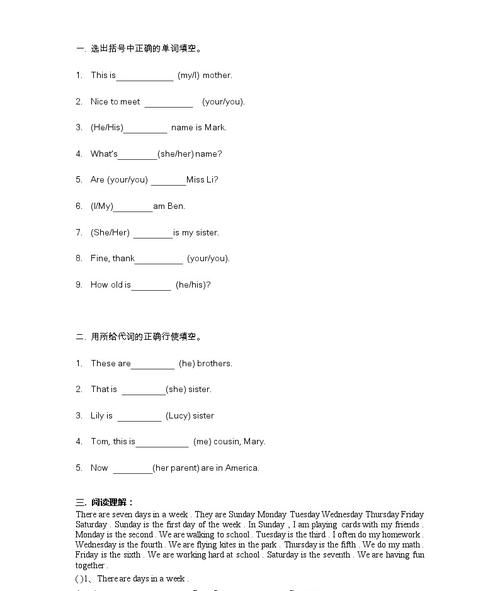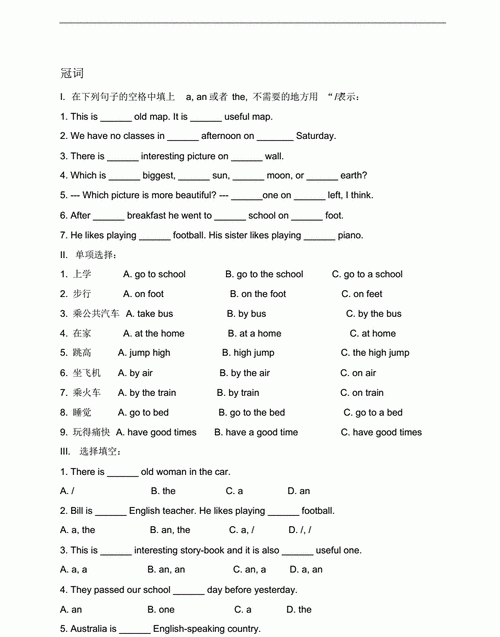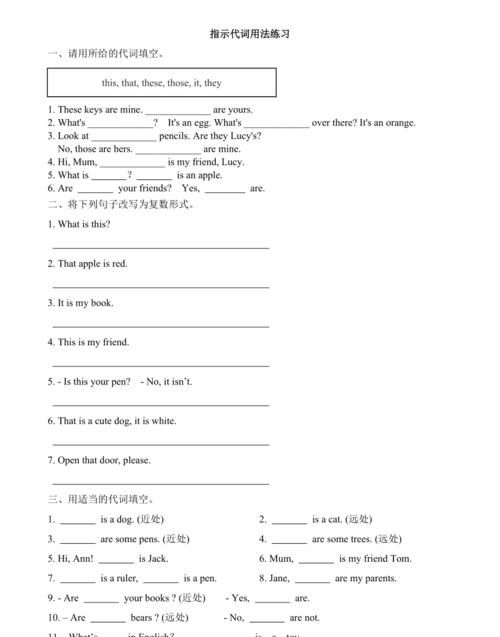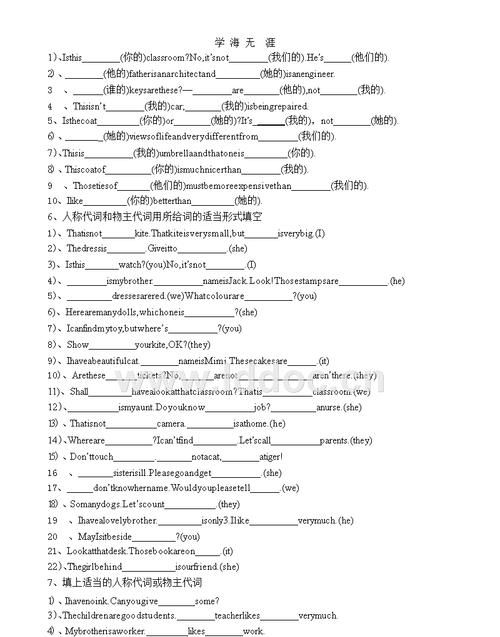本文目录


小升初英语语法汇总思维导图
语法就是语言的规律。任何一种语言都有其内在逻辑性(logic)和规律(discipline)。学习一些基本的英语语法,对于快速掌握英语语言的规律,具有事半功倍的作用,尤其是在考试中。下面就是我为大家梳理归纳的内容,希望能够帮助到大家。
小升初英语语法汇总
名词
可数名词和不可数名词
表示某一事物,有具体的和抽象的之分。分为可数名词和不可数名词。
强调:不可数名词都默认为单数,所以总是用is或者was;不要根据some、any、a lot of等词去作判断,以免受误导。
1、可数名词如何变“复数形式”:
a.一般情况下,直接加-s,如:book-books, bag-bags, cat-cats, bed-beds;
读音:清辅音后读[s],浊辅音和元音后读[z]。
b.以s. x. sh. ch结尾,加-es,如:bus-buses, box-boxes, brush-brushes, watch-watches;
读音:[iz]。
c.以“辅音字母+y”结尾,变y为i, 再加-es,如:family-families, strawberry-strawberries;
读音:[z]。
d.以“f或fe”结尾,变f或fe为v, 再加-es,如:knife-knives ,thief-thieves
读音:[z]。
e.以“o”结尾的词,分两种情况
1)有生命的+es 读音:[z] 如:mango-mangoes tomato-tomatoes hero-heroes
2) 无生命的+s 读音:[z] 如:photo-photos radio-radios
f. 不规则名词复数: man-men, woman-women, policeman-policemen, policewoman-policewomen, snowman-snowmen, mouse-mice, child-children, foot-feet, tooth-teeth, fish-fish, people-people, Chinese-Chinese, Japanese-Japanese
2、不可数名词没有复数。如果要计算不可数名词所表达的数量,就得在数词和不可数名词之间加上“量词+of”。
例如:a glass of water, a piece of paper, a bottle of juice
冠词
冠词是一种虚词,不能独立使用,通常放在名词的前面,分为“不定冠词”和“定冠词”两种。
1、不定冠词:a、an。
用在单数名词前,表示“一个,一件……”。an用在以元音“音素”开头的单词前。
如:an e-mail, an orange, an old man, an English watch, an hour
2、定冠词:the。用在单数或者复数名词前。the没有具体意思,有时翻译为这、那。
它的基本用法:
(1)用来表示特指某(些)人或某(些)事物。如:The map on the wall is new.
(2)表示说话者双方都知道的人或事物。如:Look at the picture, please.
(3)表示再次提到前面谈过的人或事物。如:This is a stamp. The stamp is beautiful.
(4)用在表示世界上独一无二的事物前。如:the sun太阳 the moon月亮 the earth地球
(5)用在由普通名词构成的专有名词前。如:the Great Wall长城
(6)用在江河、湖海等专有名词前。如:the Changjiang River长江
(7)此外,序数词、形容词级、乐器名称等词前面和一些习惯用语中一般都用定冠词the。
如:the first day, the best boy, play the piano, in the same class
数词
我们学过两类数次:基数词和序数词。
基数词用于表示数量多少,而基数词用于表示次序,常在日期中出现。区别:基数词前面没有“the”;序数词前一定要有“the”。
1、超过二十以上的两位数需要在个位和十位之间加上“-”。如:21 twenty-one
2、三位数以上的则需要在百位数后再加上and。如:101 a/one hundred and one
3、用基数词来修饰可数名词时,一定别忘了它的复数形式。如:十八个男孩 eighteen boys
4、用基数词修饰不可数名词时,如是复数,变它的量词为复数。如:两碗米饭 two bowls of rice
5、序数词一般加“th”,特殊的有:first, second, third, fifth, eighth, ninth, twelfth以及二十及二十以外的整十:twentieth, thirtieth, fortieth…
“第几十几”:前面整十不变,后面“几”改为序数词。如:88 eighty-eighth
小升初英语语法知识点
相互代词
1)相互代词只有each other和one another两个词组
他们表示句中动词所叙述的动作或感觉在涉及的各个对象之间是相互存在的
例如:
It is easy to see that the people of different cultures have always copied each other.
显而易见,不同 文化 的人总是相互借鉴的
2) 相互代词的句法功能:
a. 作动词宾语;
People should love one another. 人们应当彼此相爱。
b. 可作介词宾语;
Does bark, cocks crow, frogs croak to each other. 吠、鸡鸣、蛙儿对唱。
说明:传统语法认为,相互关系存在于两个人或物之间用each other, 存在于两个以上人和物之间用one another。现代英语中,两 组词 交替使用的实例也很多,例如:
He put all the books beside each other.
他把所有书并列摆放起来。
He put all the books beside one another.
他把所有书并列摆放起来。
Usually these small groups were independent of each other.
这些小团体通常是相互独立的。
c. 相互代词可加-'s构成所有格,例如:
The students borrowed each other's notes.
学生们互借笔记。
物主代词
1)物主代词既有表示所属的作用又有指代作用
例如:
John had cut his finger; apparently there was a broken glass on his desk.
约翰割破了手指,显而易见,他桌子上有个破玻璃杯。
物主代词有形容词性(my, your等)和名词性(mine, yours等)两种,形容词性的物主代词属于限定词。
名词性的物主代词在用法上相当于省略了中心名词的 --'s属格结构,例如:
Jack's cap 意为 The cap is Jack's.
His cap 意为 The cap is his.
2) 名词性物主代词的句法功能
a. 作主语,例如:
May I use your pen? Yours works better.
我可以用一用你的钢笔吗? 你的比我的好用。
b. 作宾语,例如:
I love my motherland as much as you love yours.
我爱我的祖国就像你爱你的祖国一样深。
c. 作介词宾语,例如:
Your should interpret what I said in my sense of the word, not in yours.
你应当按我所用的词义去解释我说的话,而不能按你自己的意义去解释。
d. 作主语补语,例如:
The life I have is yours. It's yours. It's yours. 我的生命属于你,属于你,属于你。
反身代词
1) 列表
I-myself
we-ourselves
you-yourself
you-yourselves
she-herself
he-himself
they-themselves
2)做宾语
a. 有些动词需有反身代词
absent, bathe, amuse, blame, dry, cut, enjoy, hurt, introduce, behave
We enjoyed ourselves very much last night.
我们昨晚玩得很开心
Please help yourself to some fish.
请你随便吃点鱼
b. 用于及物动词+宾语+介词
take pride in, be annoyed with, help oneself to sth.
I could not dress (myself) up at that time.
那个时候我不能打扮我自己
注:有些动词后不跟反身代词, get up, sit-down, stand up, wake up等。
Please sit down.
请坐
3) 作表语; 同位语
be oneself: I am not myself today.
我今天不舒服
The thing itself is not important.
事情本身并不重要
4) 在不强调的情况下,but, except, for 等介词后宾语用反身代词或人称代词宾格均可
如:
No one but myself (me) is hurt.
注意:
a. 反身代词本身不能单独作主语。
(错) Myself drove the car.
(对) I myself drove the car. 我自己开车。
b. 但在and, or, nor连接的并列主语中,第二个主语可用反身代词,特别是myself 作主语。
Charles and myself saw it.
小升初英语语法知识点汇总
一.名词:名词单复数,名词的格
(一)名词单复数
1.一般情况,直接加-s,如:book-books, bag-bags, cat-cats, bed-beds
2.以s. x. sh. ch结尾,加-es,如:bus-buses, box-boxes, brush-brushes, watch-watches
3.以“辅音字母+y”结尾,变y为i, 再加-es,如:family-families, strawberry-strawberries
4.以“f或fe”结尾,变f或fe为v, 再加-es,如:knife-knives
5.不规则名词复数:
man-men, woman-women, policeman-policemen, policewoman-policewomen, mouse-mice
child-children, foot-feet, tooth-teeth, fish-fish, people-people, Chinese-Chinese, Japanese-Japanese
不可数名词的复数就是原型: paper, juice, water, milk, rice, tea
(二)名词的格
(1) 有生命的东西的名词所有格:
a) 单数后加 ’s 如: Lucy’s ruler my father’s shirt
b) 以s 结尾的复数名词后加 ’如: his friends’ bags
c) 不以s 结尾的复数后加 ’s children’s shoes
? 并列名词中,如果把 ’s加在最后一个名词后,表示共有, 如:
Tom and Mike’s car 汤姆和迈克共有的小汽车
? 要表示所有物不是共有的,应分别在并列名词后加’s
Tom’s and Mike’s cars 汤姆和麦克各自的小汽车
(2)表示无生命东西的名词通常用“ of +名词”来表示所有关系:如:
a picture of the classroom a map of China
二.冠词:不定冠词,定冠词种类:
(1)不定冠词:a / an a unit / an uncle
元音开头的可数名词前用an :
an egg / an apple / an orange / an eraser / an answer / an ID card / an alarm clock / an actor / an actress /
an e-mail / an address / an event / an example / an opera / an houran old man / an interesting book / an
exciting sport / an action movie / an art lesson /
(2)定冠词:the the egg the plane
2. 用法:
定冠词的用法:
(1)特指某(些)人或某(些)物: The ruler is on the desk.
(2)复述上文提到的人或物:He has a sweater. The sweater is new.
(3)谈话双方都知道的人或物:The boys aren’t at school.
(4)在序数词前: John’s birthday is February the second.
(5)用于固定词组中: in the morning / afternoon / evening
不用冠词的情况:
(1)专有名词前:China is a big country.
(2)名词前有定语:this , that , my , your , some, any , no 等:
This is my baseball.
(3)复数名词表示一类人和事:Monkeys can’t swim. They are teachers.
(4)在节日,日期,月份,季节前:Today is Christmas Day. It’s Sunday.
(5)一日三餐前:We have breakfast at 6:30.
(6)球类 棋类运动前:They often play football after class. He plays chess at home.
_ 但乐器前要用定冠词:I play the guitar very well.
(7)学科名称前:My favorite subject is music.
(8)在称呼或头衔的名词前:This is Mr Li.
(9)固定词组中:at noon at night by bus
三、代词:人称代词,物主代词
人称代词 物主代词
主格 宾格
第一
人称 单数 I(我) me my(我的)
复数 we(我们) us our(我们的)
第二
人称 单数 you(你) you your(你的)
复数 you(你们) you your(你们的)
第三
人称 单数 he(他) him his(他的)
she(她) her her(她的)
it(它) it its(它的)
复数 they(他们/她们/它们) them their(他们的/她们的/它们的)
四、形容词,副词:比较级,级
(一)、形容词的比较级
1、形容词比较级在 句子 中的运用:两个事物或人的比较用比较级,比较级后面一般带有单词than。比较级前面可以用more, a
little来修饰表示程度。than后的人称代词用主格(口语中可用宾格)。
2.形容词加er的规则:
⑴ 一般在词尾加er ;
⑵ 以字母e 结尾,加r ;
⑶ 以一个元音字母和一个辅音字母结尾,应双写末尾的辅音字母,再加er ;
⑷ 以“辅音字母+y”结尾,先把y变i,再加er 。
3.不规则形容词比较级:
good-better, beautiful-more beautiful
(二)副词的比较级
1.形容词与副词的区别 (有be用形,有形用be;有动用副,有副用动)
⑴在句子中形容词一般处于名词之前或be动词之后
⑵副词在句子中最常见的是处于实义动词之后
2.副词比较级的变化规则基本与形容词比较级相同 (不规则变化:well-better, far-farther)
五 数词:基数词,序数词一、基数词
(1)1-20
one,two,three,four,five,six,seven,eight,nine,ten,eleven,twelve,thirteen,fourteen,fifteen,
sixteen,seventeen,eighteen,nineteen,twenty
(2)21-99 先说“几十”,再说“几”,中间加连字符。
23→twenty-three,34→thirty-four,45→forty—five,56→fifty-six,67→sixty-seven,78→seventy-eight,89→
eighty-nine,91→ninety-one
(3)101—999先说“几百”,再加and,再加末两位数或末位数;
586→five hundred and eighty-six,803→eight hundred and three
(4)l,000以上,先从右往左数,每三位数加一个“,”,第一个“,”前为thousand.第二个“,”前为million,第三个“
,”前为billion
1,001→one thousand and one
18,423→eighteen thousand,four hundred and twenty-three
6,260,309→six million two hundred and sixty thousand three hundred and nine
750,000,000,000→seven hundred and fifty billion
二、序数词
(1)一般在基数词后加th
eg.four→fourth,thirteen→thirteenth
(2)不规则变化
one→first,two→second,three→third,five→fifth,eight→eighth,nine→ninth,twelve—twelfth
(3)以y结尾的十位整数,变y为ie再加th
twenty→twentieth, forty→fortieth, ninety→ninetieth
(4)从二十一后的“几十几”直至“几百几十几”或“几千几百几十几”只将个位的基数词变为序数词。
twenty-first,two hundred and forty-fifth
基数词转为序数词的口诀:
基变序,有规律,词尾加上-th.
一,二,三,特殊记,词尾字母t,d,d.
八去t,九去e, ve要用f替。
ty将y变成i,th前面有个e.
若是碰到几十几,前用基来后用序。
六、介词:常用介词:in, on, at, behind等
1.at表示时间概念的某一个点。(在某时刻、时间、阶段等)。
??at 1:00(dawn,midnight,noon)在一点钟(黎明、午夜、中午) ??
2.on
1)表示具体日期。
注:(1)关于"在周末"的几种表示法:
??at(on)the weekend?在周末---特指
??at(on)weekends?在周末---泛指
??over the weekend?在整个周末
??during the weekend?在周末期间
? (2)在 圣诞节 ,应说at Christmas?而不说on Christmas?
2)在(刚……)的时候。
On reaching the city he called up his parents.
一到城里他就给父母打了一个电话。
3.in
1)表示"时段"、"时期",在多数情况下可以和during互换,前者强调对比,后者强调持续。 in(during)1988(December,
the 20th century)在一九八八年(十二月、二十世纪)
七、动词:动词的四种时态:
(1)一般现在时:
一般现在时的构成
1. be动词:主语+be(am, is, are)+ 其它 。如: I am a boy. 我是一个男孩。
2. 行为动词:主语+行为动词(+其它)。 如: We study English. 我们 学习英语 。
当主语为第三人称单数(he, she, it)时,要在动词后加"-s"或"-es"。如:Mary likes Chinese.玛丽喜欢汉语。
动词+s的变化规则
1.一般情况下,直接加-s,如:cook-cooks, milk-milks
2.以s. x. sh. ch. o结尾,加-es,如:guess-guesses, wash-washes, watch-watches, go-goes
3.以“辅音字母+y”结尾,变y为i, 再加-es,如:study-studies
(2)一般过去时:
动词过去式详解 动词的过去式的构成规则有:
A、规则动词
① 一般直接在动词的后面加ed:如 worked , learned , cleaned , visited
② 以e结尾的动词直接加d:如 lived , danced , used
③ 以辅音字母加y结尾的动词要改y为i再加ed(此类动词较少)如 study – studied carry – carried worry –
worried (注意play、stay不是辅音字母加y,所以不属于此类)
④ 双写最后一个字母(此类动词较少)如 stopped
B、不规则动词(此类词并无规则,须熟记)小学阶段要记住以下动词的原形和过去式:sing – sang , eat – ate ,
see – saw , have – had , do – did , go – went , take – took , buy – bought , get – got , read – read
,fly – flew , am/is – was ,
are – were , say – said , leave – left , swim – swam , tell – told , draw – drew , come – came , lose
– lost , find – found , drink – drank , hurt – hurt , feel – felt
(3)一般将来时:
基本结构: ①be going to + do;
②will+ do. be going to = will
I am going to go swimming tomorrow(明天). = I will go swimming tomorrow.
(4)现在进行时: am,is,are+动词现在分词
动词现在分词详解 动词的ing形式的构成规则:
① 一般的直接在后面加上ing , 如doing , going , working , singing , eating
② 以e 结尾的动词,要先去e再加ing ,如having , writing
③ 双写最后一个字母的(此类动词极少)有:running , swimming , sitting , getting
小升初英语语法汇总相关 文章 :
★ 小升初英语语法大全与必背知识点
★ 小升初英语语法专项练习题附答案
★ 小升初英语考试必备10大语法知识点
★ 小升初英语必考的10个知识点与句型汇总
★ 2020小升初英语语法大全
★ 小升初英语必备10大语法知识点汇总
★ 小升初1-6年级英语知识点分类汇总
★ 小升初英语知识点大全
★ 小升初英语知识:语法知识
★ 小升初英语40背重点句型与十大语法知识点

小升初英语语法100+天天练答案
从2017年元旦次日起每天一道语法题,坚持半年。题目加答案附解释。
Day 1
1,Why do you like Tony? ~Because he is ____ honest boy.
A. a B. an C. the D. /
(答案次日公布)
正确答案:B
不定冠词a与an的用法区别在后面的名词,后面名词是元音开头用an,这元音开头是指读音,非元音字母。honest的首字母h不发音,第二个字母o发元音,所以属元音开头单词,类似还有hour。
Day 2
2, Robin Hood took from ___ rich,and gave to ___ poor.
A. a,an B. a,the C. an,the D.the,the
正确答案:D
本题考查定冠词the的用法,形容词rich,poor,前面用the表示一类人,the rich,富人,the poor,穷人,句子意思是Robin Hood劫富济贫。
Day 3
3.Let's go and watch them play___chess.
A. a B. an C. / D. the
正确答案:C
这是考查零冠词知识点的运用。按英语语法习惯,球类与棋类运动名词不用冠词,play chess是下棋的意思,chess是棋类名词。故选C.
Day 4
4.——what did you have for breakfast this morning?
—— I had _____milk and two _____.
A.a; pieces of breads
B. two; pieces of bread
C. some; pieces of bread
D.much; pieces of breads
正确答案:C
本题考查不可数名词,不可数名词不能用a修饰;没有复数形式。要表示数量时直接修饰时可以用some,much,或者用of形式如a cup of tea,a piece of bread。
Day5
5.There are many yellow____ on the tree in autumn.
A. leaves B. leafs C.leafes D.leaf
正确答案:A
这是考查名词单复数的知识点。leaf是树叶的意思,是可数名词,其复数形式为leaves,把最后的f字母改为v,再加es。句子中有many(许多)是修饰可数名词复数的,故选A。
Day 6
6,——Whose dictionary is that ?
——It's________ .
A. Lusy's and Lily's
B. Lusy and Lily's
C. of Lusy and Lily
D. of Lusy and Lily's
正确答案:B
这是考查名词所有格表示共有的表达。从句子意思看,字典只有一本,是Lusy和Lily共同拥有的。答案A是指两人各自拥有一本,不符合题意。C和D是错误答案。
Day 7
7.These are ___ cups. ___ are over there.
A. our , Yours B. yours , Mine
C. his , Our D. their , Your
正确答案:A
这是考查物主代词的,历来是许多孩子的难点。物主代词分为形容词性和名词性两种,区分的特征是后面是否有名词跟着。根据本题看,第一空后面直接跟有名词cups,要用形容词性的our,第二空没有直接跟着名词,后面是个be动词are,只能用名词性的Yours。故选A。
Day 8
8.If you travel to Beijing, you had better visit two places to interest. One is the Great Wall, and ____ is the Summer Palace.
A. other B. another C. the other D. the others
正确答案:C
这是对不定代词one……the other……的考查,one与the other两者经常连用,the other表示两个中的另一个,前面经常会有two提示,another表示三者以上的另一个。
Day9
9. ——Do you have ____ else to say for your mistakes ?
——____ but sorry.
A. anything; Something
B. something; Everything
C. something; anything
D. anything; Nothing
正确答案:D
这是对复合不定代词的考查。问题意思是:对你的错误你还有什么可说的吗?回答:对不起,没什么说的Nothing but sorry。
Day10
10.______ workers in this factory were born in the ______ .
A. Hundreds of; 1990
B. Hundreds of; 1990s
C. Hundred; 1990
D. Hundred of ; 1990s
正确答案:B
这是考查基数词hundred,thousand,million,billion的用法以及基数词表达年代用法的知识点。hundred,thousand,million,billion前面有具体数字时,末尾不能带s,反之,如果前面没有具体数字时则要末尾带s,
hundreds of
thousands of
millions of
billions of
1990s表示二十世纪九十年代。
Day11
11.______ of the houses were made of stones.
A. Three five B. Three fives
C. Three fifth D. Three fifths
正确答案:D
本题是考查分数的表达法,英语分数的表达由基数词与序数词共同表达:分子用基数词,放前面,分母用序数词,放后面,如五分之一:one fifth;如果分子大于一,分母的序数词末尾还要加s,如五分之三:three fifths。本题的主语是五分之三的房子:Three fifths of the houses。(不好意思,昨天太忙,题目出现错误,已经更正。)
Day 12
12. Our great country China was founded ______ .
A. on the 1 October 1949
B. in 1 October 1949
C. on 1st Octobet 1949
D. in 1st October 1949
正确答案:C
这是考查日期的表达法以及时间介词的搭配,一般来说,年月季节是用介词in,但具体到哪年哪月哪天就需要用on,在星期几是要on。本题是一九四九年十月一日,先排除B、D,又因为表示日要用序数词,所以选C.
Day13
13.Mr Black bought a new bike ____ his son ____ his birthday present.
A. to; as B. for; for
C. to; for D. for; as
正确答案:D
这是介词的用法考查,Mr Black为(for)他儿子买了一部自行车作为(as)生日礼物,故选D。
Day14
14. I often go shopping with my
classmates ______ Saturday afternoon.
A. in B. at C. on D. for
正确答案:C
这是考查时间介词的运用。具体提到哪天,不管是早上还是下午用on。
Day15
15.——Kelly, who's the girl ____ glasses in the photo?
——It's me. I used to wear glasses and had long hair.
A. by B. of C. on D. with
正确答案:D
这是介词with的用法考查,介词短语with glasses修饰前面的名词the girl。
Day16
16. Come on,____ we,ll be late for the film.
A. and B. but C. or
正确答案:C
这是考查连词or的用法,对于小学生来说,or的这个用法有点陌生,有“否则”的意思,而不是初学时的“或者”。
Day17
17.——Would you like to come to dinner tonight?
——I'd like to, ____ I'm too busy.
A. and B. or C. as D. but
正确答案:D
这是考查连词but.本题根据句意只能选D.
Day 18
18. ______ my father ______ my mother are interested in football.
A. Both…and
B. Not any…but also
C. Either…or
D. Neither…nor
正确答案:A
根据句意要选A.句子意思是我的父亲与母亲两人都对足球感兴趣,both的用法符合句子意思。
Day19
19.I think autumn is _____ season of the year in our city.
A. the better B. good
C. better D. the best
正确答案:D
正确形容词最高级用法的考查,题意是我认为秋天是一年中最好的季节,一般与三者以上比较用最高级,全年是四个季节,所以用最高级。
Day20
20.——Miss Lin is very popular among the students.
——Yes. Her classes are ____ lively.
A. always B. sometimes
C. hardly D. never
正确答案: A
这是考查频度副词用法的考点题。由句意我们知用always才合适。
Day21
21.——Look! How ____ the boy are!
——Yes. They won the gane this afternoon.
A. exciting B. excitement
C. excite D. excited
正确答案:D
这是考查形容词excited用法的。考点所在的句子是感叹句,主语是the boys,所以选D。
Day22
22.——Must I hand in my homework , Miss Ma?
——No, you ______ . You can go on doing it.
A. can't B. may not
C. needn't D. mustn't
正确答案:C
这是情态动词must的考查,其一般疑问句的否定回答不能用mustn't,用needn't才合适。
Day23
23. You ____ throw it away. Maybe
Your mother will use it.
A. had better not to
B. had better
C. had better to Not
D. had better not
正确答案:D
情态动词had better的否定句直接在后面加否定词not,选D符合要求。
Day24
24. You shouldn't ____ your books to the classroom.
A.brings B. bringing C. bring
正确答案:C
情态动词shouldn't后面要用动词原形,所以选C合适。
Day25
25. The children may ____ swimming this afternoon.
A. go B. goes C. going
正确答案:A
情态动词may 后面跟行为动词原形,故选A。
Day26
26. I ____ half an hour on my homework yesterday.
A. took B. spend
C. used D. spent
正确答案:D
这是动词的近义辨析,因为主语是I,时间又是yesterday,所以要用spent。
Day27
27. It ____ me two hours to get there by bus.
A. spent B. took
C. used D. paid
正确答案:B
形式主语it后的动词花时间要用take,题目答案是使用了过去式took。
Day28
28. Look , Tom ______ a story book.
A. is reading B. read
C. reads D. reading
正确答案:A
动词时态的考点,Look现在进行时的特征词,该时态动词形式是be+V.ing,选A才合适。
Day29
29. I _____ her yesterday.
A. call B. called C. calls
D. am calling
正确答案:B
题目句子中的yesterday是动词时态一般过去时的特征词,所以选B合适。
Day30
30. It ____ tomorrow.
A. will rain B. rains
C. doesn't rain D.rainy
正确答案:A
题目句子后的tomorrow是一般将来时的特征词,所以选A是合适的。
Day31
31.The boy usually ____ to school on foot.
A. go B. is going
C. went D. goes
正确答案:D
usually是一般现在时的一般特征词,主语是boy,名词单数相当于第三人称单数,所以选D合适。
Day32
32. There _____ a sport meeting in our school next week.
A. is B. will C. will be D. has
正确答案:C
这是there be 句型考查题,因为句子后面next time 限定时将来的状态,所以要选C才正确。
Day33
33. ——why not ____ the music club.
——I'm sorry. I can't sing and dance.
A. to join B. join C. joining
D. joins
正确答案:B
why not 后面带动词原形。
Day34
34. My grandfather wants _____
around the world, because he
enjoys _____ new places.
A. travelling ; seeing
B. to travel ; to see
C. to travel ; seeing
D. travelling ; to see
正确答案:C
这是非谓语动词考查点。动词want后面习惯跟动词不定式to+V.,动词enjoy后面习惯跟动名词 V.ing形式。
Day35
35. From that time on,Mary practised _____ the piano every
day.
A. plays B. playing
C. played D. to play
正确答案:B
动词practise后面一般接动名词形式。
Day36
36. I always tell my students ____
on the road because it' really
dangerous.
A. not to play
B. to play not
C. not playing
D. not play
正确答案:A
这是非谓语动词的考查点。tell sb.
to do sth.是习惯搭配,其否定形式为 tell sb.not to do sth. 故选A。
Day37
37. ______ beautiful girl she is!
A. How B. What
C. How a D. What a
正确答案:D
这是感叹句考查。感叹句有两种,一种是how引导的,一种是what引导的。这里是what引导的形式what+ a+形容词+可数名词单数+陈述句语序形式。
Day38
38. ______ delicious the food is!
A. How B. How a
C. What D. What a
正确答案:.A
这是how+形容词/副词+陈述句句序的感叹句形式。
Day39
39. _____ interesting news it is !
A. How B. How an
C. What D. What an
正确答案:C
虽然空格后面是形容词interesting,
但紧跟着是不可数名词news 才到主谓的陈述句语序,所以是
what + 形容词+ 名词 + 陈述句语序,故C才是最合适的。
Day40
40. _____ hardworking students they are!
A. What B. What a
C. How D. How a
正确答案:A
这是感叹句what+形容词+名词复数+陈述句语序!
Day41
41. This is ____ useful book.
A. the B. a C. an D. /
正确答案:B
这是不定冠词考查点,空格后修饰名词book 的useful虽然是原因字母u开头,但其发音是辅音开头,所以只能用a。
Day42
42. Listen, someone is playing ____ guitar.
A. the B. a C. an D. /
正确答案:A
定冠词的用法之一,西洋乐器前要用,故选A。
Day43.
43. Mary has _____ lunch at school every day.
A. the B. a C. an D. /
正确答案:D
正确零冠词知识点的考查,一天三餐breakfast lunch和dinner 是零冠词。
Day44
44. Is there any _____ in the bottle .
A. orange B. oranges
C. apple D. apples
正确答案:A
orange一词多义,作橙汁解时是不可数名词,作桔子,橙子解时是可数名词。根据句意,要用不可数名词意思。
Day45
45. We have some _____ for dinner.
A. a potato B. potatos
C. potatoes D. potato
正确答案:C
辅音字母+o结尾的名词的复数形式有些特别,有生命的加es,potatoes,tomatoes,heroes……无生命的只加s,photos,pianos等。
Day46
46. She is a friend of my _____.
A. aunt B. aunt's C. aunts
正确答案:B
这是名词所有格中的一个知识点,表示部分关系的情况: a friend of
my aunt's(我阿姨的一位朋友。)
Day47
47. I think no other people here will help _____ .
A. he B. him C. his D. himself
正确答案:B
这是考查人称代词的。空格前是动词help,所以后面使用人称代词宾格作为动词的宾语。
Day48
48. Mr. Yang is an excellent teacher. _____ in our class loves him.
A. Someone B. No one
C. Somebody D. Everyone
正确答案:D
这是考查复合不定代词的运用。句意是说Mr.杨是个优秀的老师,我们班里的每个人都喜欢他。根据句意选D就对了。
Day49.
49. Help ______ to some fish, boys and girls!
A. your B. you C. yourself
D. yourselves
正确答案:D
这是反身代词考查题,这是一个习惯用法,因为后面的称呼是boys
and girls所以用复数形式D。
Day50
50.It will take ____ to the moon.
A. we B. our C. us D. ours
正确答案:C
空格前是动词take,动词后面用人称代词宾格,所以选C。
(另建文件更新接龙,请移步。)

以上就是关于小升初英语代词专项训练 ,小升初英语语法天天练 - 草稿的全部内容,以及小升初英语代词专项训练 的相关内容,希望能够帮到您。
